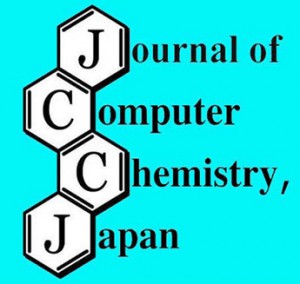[Published online Journal of Computer Chemistry, Japan Vol.14, 189-192, by J-STAGE]
<Title:> Fluorescence via Reverse Intersystem Crossing from Higher Triplet States
<Author(s):> Tohru SATO
<Corresponding author E-Mill:> tsato(at)moleng.kyoto-u.ac.jp
<Abstract:> A high external quantum efficiency observed for organic light-emitting diodes using PTZ-BZP (PTZ: 10-hexyl-phenothiazin, and BZP:4-phenyl-2,1,3-benzothiadiazole) is attributed to fluorescence from S1 via reverse intersystem crossing from the T3 or T2 state under electrical excitation. The radiative and non-radiative transitions from these higher triplet states to the lower triplet states are suppressed because of their small overlap densities. In this study, a principle to design such an electronic structure is proposed.
<Keywords:> organic light-emitting diode (OLED), vibronic coupling, thermally activated delayed fluorescence (TADF), non-radiative transition, overlap density
<URL:> https://www.jstage.jst.go.jp/article/jccj/14/6/14_2015-0072/_article/-char/ja/
<Title:> Fluorescence via Reverse Intersystem Crossing from Higher Triplet States
<Author(s):> Tohru SATO
<Corresponding author E-Mill:> tsato(at)moleng.kyoto-u.ac.jp
<Abstract:> A high external quantum efficiency observed for organic light-emitting diodes using PTZ-BZP (PTZ: 10-hexyl-phenothiazin, and BZP:4-phenyl-2,1,3-benzothiadiazole) is attributed to fluorescence from S1 via reverse intersystem crossing from the T3 or T2 state under electrical excitation. The radiative and non-radiative transitions from these higher triplet states to the lower triplet states are suppressed because of their small overlap densities. In this study, a principle to design such an electronic structure is proposed.
<Keywords:> organic light-emitting diode (OLED), vibronic coupling, thermally activated delayed fluorescence (TADF), non-radiative transition, overlap density
<URL:> https://www.jstage.jst.go.jp/article/jccj/14/6/14_2015-0072/_article/-char/ja/
